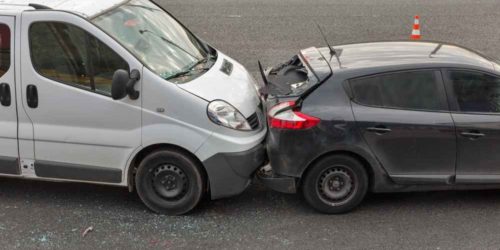When you visit a doctor after a car accident, they will likely recommend diagnostic imaging to help assess your injuries. Some car accident injuries are obvious to the naked eye, while others may require additional testing and evaluation. Follow your doctor’s advice on which diagnostic imaging they recommend for you and your injuries.
Types of Imaging Tests After an Accident
The type of diagnostic imaging your doctor recommends will depend on the type and severity of your injuries. Because of the adrenaline, you might not realize you suffered any internal injuries without the support of diagnostic testing. These injuries could include brain damage, herniated discs, severe whiplash, and sprains, which can all be detected with various types of diagnostic tests.
X-Rays
This type of diagnostic test is common for broken bones or dislocated joints but can also be used to detect other car accident injuries. An X-ray provides a 2D image of part of the body in black and white contrast. Your doctor may order this to examine a particular area of the body after a car accident or to monitor your healing progress.
When you get an X-ray, the machine uses a small amount of radiation to create images of your body. This level of radiation exposure is typically considered safe for most adults. However, you shouldn’t get an X-ray if you are pregnant — in these cases, your doctor could recommend an MRI instead (more on this later). The results of an X-ray are typically available on the same day and will help your doctor determine the appropriate diagnosis and the best treatment options for your specific injuries.
CT Scans
A CT scan, also known as a CAT scan, stands for computed (axial) tomography and uses a combination of X-rays and computer technology to generate images of the internal structures in the body. They provide fast and detailed images to help detect injuries that are more advanced than X-rays. This is because a CT scan can create imaging for bones, joints, organs, blood vessels, and soft tissues. Symptoms like lower back pain after a car accident might be a sign of an injury like a herniated disc or damaged nerve, which a CT scan can help detect.
A CT scan will usually involve you lying on a table while a machine rotates around you to take a combination of X-rays from different angles. These images are then processed to produce cross-sections or 3D visualizations of the scanned area. In some cases, your doctor may request a CT scan with contrast, where a harmless dye is taken orally or intravenously to increase the level of contrast in the final images. A CT scan is painless and doesn’t require much preparation, which is why they are commonly used in emergency situations.
Book an appointment for post-accident checks today
MRI Scans
Magnetic resonance imaging, or MRIs, uses high-powered magnets and radio waves to provide images of structures inside the body. When a doctor can’t get a clear enough picture of your car accident injuries with an X-ray or CT scan, they might order an MRI instead. MRIs are also recommended for neurology and for taking a close look at the brain. They can be performed for almost any part of the body — head, face, neck, spine, and limbs. For example, if you suffer a blow to the head during an accident, your doctor may request an MRI to help diagnose or rule out a concussion.
Unlike some other diagnostic imaging tools, an MRI does not expose you to any radiation and is a non-invasive procedure. The MRI machine is shaped like a large tube, and you lie still inside while large magnets rotate around your body inside the structure. This allows the MRI to create 3D images of your internal organs, muscles, and bones. Your doctor can then use results from an MRI to inform diagnoses and treatment plans.
Ultrasounds
An ultrasound scan is perhaps best known for its use during pregnancy. However, an ultrasound can also be used to identify or diagnose car accident injuries. This type of diagnostic test can provide your doctor with more information about a potential injury or issue with organs, blood vessels, or soft tissues. Like MRIs, ultrasounds don’t use radiation, which makes this type of diagnostic test safe and appropriate to use during pregnancy.
An ultrasound technician performs this type of diagnostic test with a wand-like apparatus known as a transducer. The sonographer, or ultrasound technician, will apply a special lubricating gel to your skin to help transmit sound waves and prevent friction as the transducer touches your skin. The ultrasound transducer sends sound waves through your body that echo against dense objects inside the body, like your organs and bones. These sound waves and echoes send information to the computer that forms a picture of the area. These scans can also be used if you are experiencing pain, swelling, or other uncomfortable symptoms after a car accident.
Get on the Road to Recovery Today
If you’ve been in an accident recently, it’s important to get checked for injuries to make sure you don’t experience any long-term effects. Our team of doctors and specialists at Pro-Care are experienced in identifying and treating post-accident conditions like whiplash, back pain, brain injuries, chronic pain, and more. You should never have to compromise your health after traumatic events like a collision (even minor ones) — find a Texas clinic near you and book an appointment to improve your recovery today.



